Arepas de coco | You know those foods that instantly make you nostalgic with one bite? Whenever I go home to Puerto Rico, my family and I spend a day traveling around the island and stopping at roadside kiosks to enjoy some fritura and a cold drink.
During my last visit home, we traveled along the coast and stopped at a small kiosk serving fried treats and fresh seafood salad. The best surprise was the discovery that they were also serving hot from the pan arepas de coco, one of my favorite treats, topped with fresh seafood salad.
But I got to thinking: why should I only get to enjoy one of my favorite street foods when I go home? If I had to hop a plane to have these every time I had a craving for one, that would be a sad, sad existence.
So today I decided to make this Puerto Rican arepas recipe at home and share it with you all–bringing a delicious piece of the island to you, wherever your kitchen happens to be.
What are arepas?
An arepa is a fry bread, crispy on the outside and fluffy on the inside. The way the arepa bread is prepared makes for a light, airy middle, wrapped in a satisfying, golden brown crunch.
Different cultures have their own variations. And like many things, everyone insists their arepas are the best arepas!
Puerto Rican Arepa vs. Venezuelan Arepa & Colombian Arepa
If you are familiar with Mexican, Venezuelan, and Colombian arepas, you will notice that Puerto Rican arepas are different. First of all, the ones found throughout South America are corn meal based, made with harina precocida (also called harina PAN).
The cakes are then shaped by hand like a patty and pan-fried. I would describe them like a thin corn cake that is pan-fried.
But Puerto Rican arepas, also called “domplines” in the Dominican Republic and southern parts of Puerto Rico, are flour-based. The arepa dough is then rolled thin and deep fried.
What is the Difference Between Pupusas, Navajo Fry Bread, and Arepas?
Some might get arepas confused with pupusas, but there are some key differences. Pupusas are larger and flatter than arepas. And they’re also made with masa harina, which creates a different texture.
Arepas have also been compared to Navajo fry bread but are fluffier where Navajo fry bread is very crispy and sturdy enough that it’s often used for tacos.
But they’re all delicious vessels for some tasty ingredients.
What Are Arepas Made Of?
2 cups all-purpose flour
1 tsp baking powder
1 cup sugar
1/4 tsp salt
1 cup (not the entire can) canned coconut milk
Notes for Arepas de Coco
- Just like when making the perfect pita bread, the key to getting arepas to puff up and create that wonderful air pocket is to roll the arepa mix thin. Trust me on this.
- If you don’t like coconut, we can still be friends. And you can use regular milk.
- Make sure to only use 1 cup of canned coconut milk and not the entire can.
- For the perfect fried arepa, make sure the oil is hot before adding the arepa mix. To be sure it is up to temperature, add a small scrap of dough to the oil. It should quickly puff and begin to brown.
- You CANNOT substitute nut or coconut flours in the arepa flour. These behave very differently and are much denser than all-purpose flour. So they will not work with the recipe as written.
- As with any fried food, these are best eaten right after cooking the arepas. It helps maintain the taste and texture. However, they can be stored in an airtight container and enjoyed for up to a week. They will not be as crispy, but they will still be tasty.
- This is a soft dough that may be tacky at first. Be sure to lightly dust the dough and the work surface to keep it from sticking.
How to Serve Arepas
One more time for those in the back, I absolutely LOVE arepas de coco. They are wonderful enjoyed on their own, but you can also stuff them with cheese and sweet plantain, picadillo (meat filling), black beans, ham and cheese, or whatever strikes your fancy. You do you.
But my personal favorite is seafood salad. That tangy, citrusy goodness takes arepas to the next level. If you want to make this at home, this Ensalada de Pulpo (Octopus Salad) from Delish D’lites looks divine!
There is something magical about fry bread. How can something be so light, airy, and crispy at the same time? Plus that touch of coconut? My dream treat.
While fry bread may not be friendly to the waistline, you can’t deny that fried foods are comforting and delicious. In Puerto Rico, street food is synonymous with fried food and I’ll always make a detour for one of my favorite treats.
You may not find arepas de coco at every roadside kiosk, but they will probably have other amazing treats like pastelillos, bacalaitos, and alcapurrias. And now you can make them at home!
But you have been warned–all of these are incredibly addictive.
more bread love
- asiago black pepper bread
- no kneed skillet olive bread
- garlic knots
- mallorca bread (pan de mallorca)
- Yuca en Escabeche
- Pinchos de Pollo
- Arroz con Pollo
- Sopa de Pollo
- Yuca Frita
- Tostones
- Arroz con Gandules
- And the rest of my Puerto Rican Recipe Collection
Arepas de Coco (Puerto Rican Coconut Fry Bread)
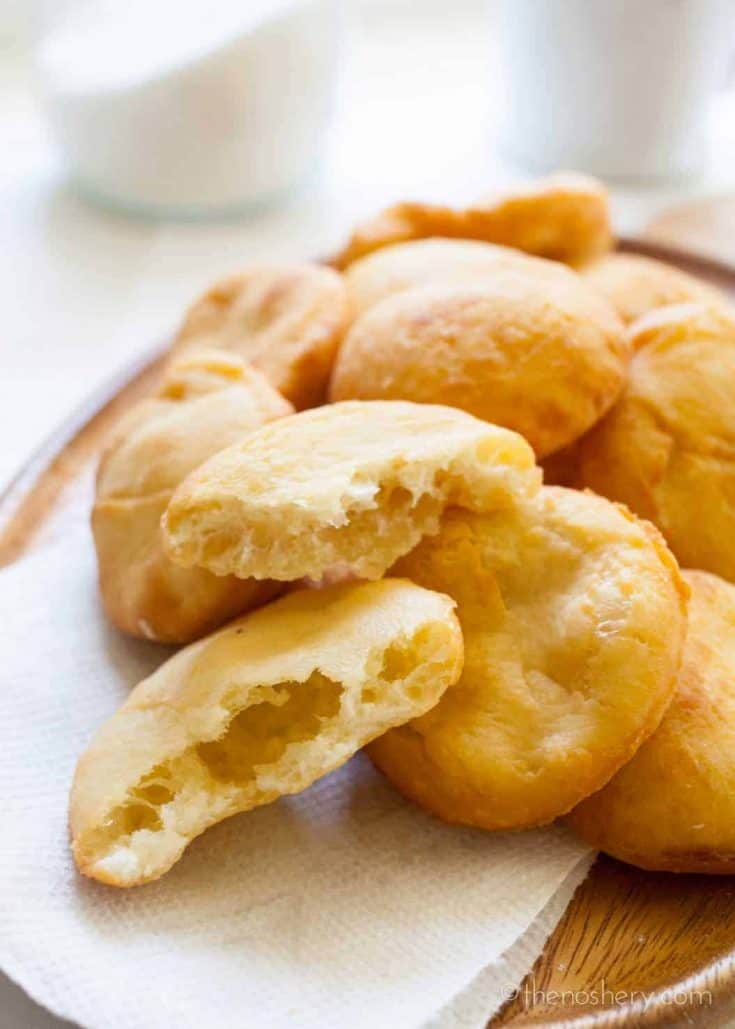
Arepas de coco is one of my favorite street foods in Puerto Rico. Puerto Rican arepas are fry bread that is light on the inside and crisp on the outside.
Ingredients
- 2 cups all-purpose flour
- 1 tsp baking powder
- 1 cup sugar
- 1/4 tsp salt
- 1 cup canned coconut milk (DO NOT use the entire can of coconut milk. Just 1 cup)
Instructions
- Combine flour, baking powder, sugar, and salt in a medium bowl. Wisk until well combined and add coconut milk. Mix until just combined. Flour your hands and work surface. Then knead dough until completely combined and tacky. Place in a bowl, cover with kitchen towel and let rest for 30 minutes.
- Divide the dough in half. On a floured work surface roll one-half about 1/8 inch thin. Using a glass or biscuit cutter cut rounds in the dough and repeat with remaining dough.
- Heat oil in a large skillet over medium-high heat. Test oil with a scrap of dough. It should puff and float. Once the oil is hot you can then carefully add dough rounds to the oil. Fry until dough puffs and then turn the rounds. Continue to fry until golden brown.
- Transfer to a plate lined with paper towels to drain and cool. Serve warm and crisp.
Notes
If you have an allergy to coconut you can use whole milk in place of coconut milk.
Neither coconut flour or almond flour can be used as a substitute for all-purpose flour. They are both very dense flours and will not work for this recipe.
Recommended Products
As an Amazon Associate and member of other affiliate programs, I earn from qualifying purchases.
Nutrition Information:
Yield:
24Serving Size:
1Amount Per Serving: Calories: 89Total Fat: 2gSaturated Fat: 2gTrans Fat: 0gUnsaturated Fat: 0gCholesterol: 0mgSodium: 46mgCarbohydrates: 17gFiber: 0gSugar: 8gProtein: 1g
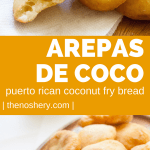
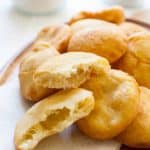
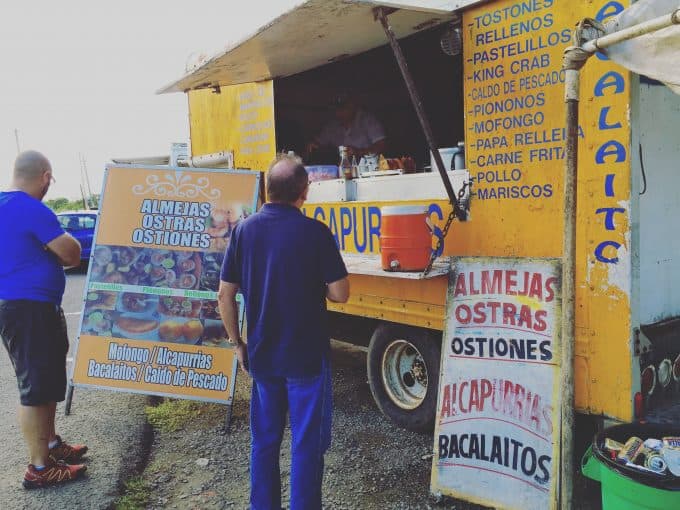
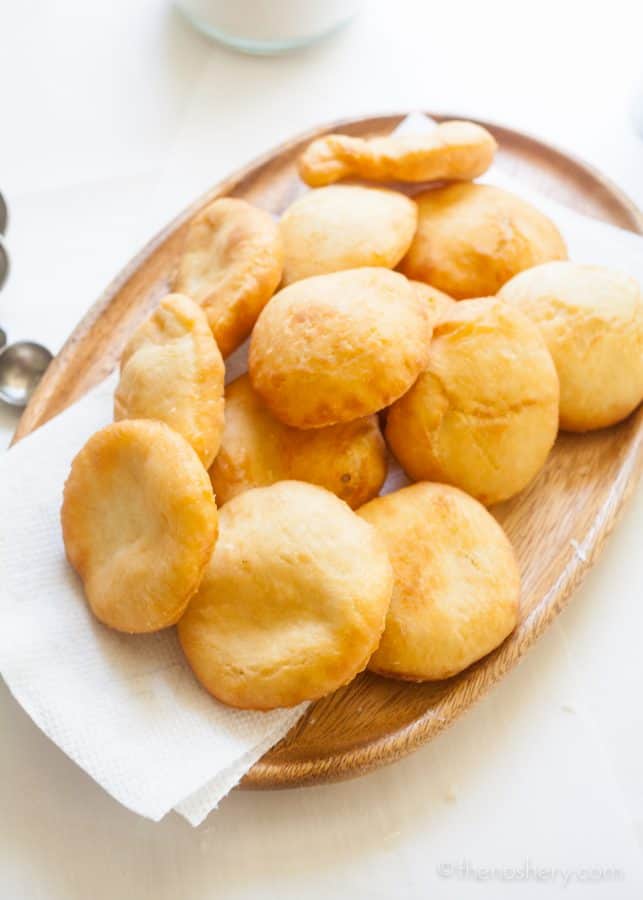
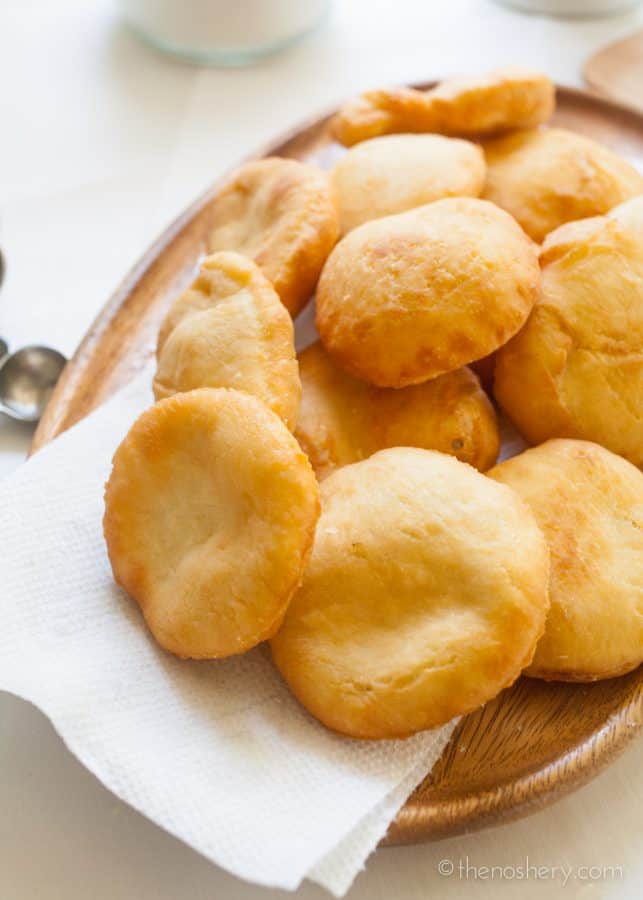
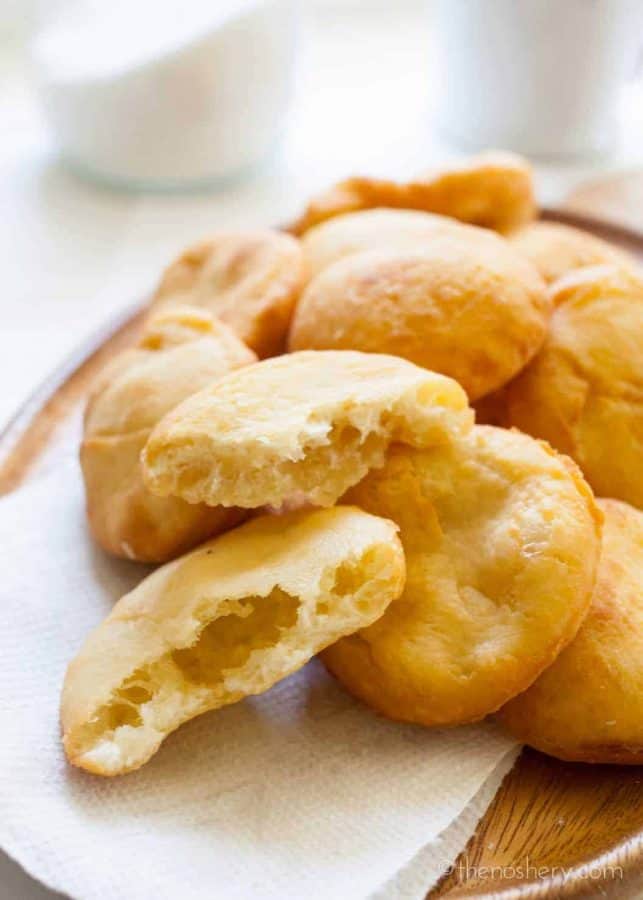
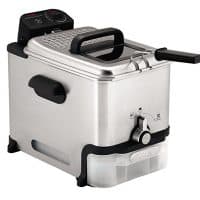
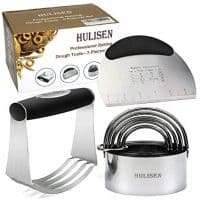
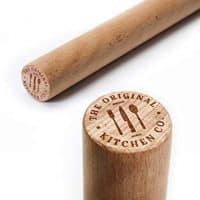
I used boxed coconut milk, not canned, and the dough required doubling the flour. I think the issue is canned versus box coconut milk. Canned has over 400 cal per cup, whereas box has 60 calories per cup.
I tried this recipe and sad to say, it was a MESS and I don’t know what I did wrong. My mixture was more of a runny batter instead of a dough. I followed the recipe to a tee. Help!
I want to comment to the person trying gluten free 1:1 flour. I made these last night using Bob’s Red Mill 1:1 Gluten Free flour… AND with 1 cup of sugar. They didn’t puff up as large as the recipe states, but they did get fluffier. It was fun to break them open, so much like real bread. I put them at a cross in taste and texture between a cake doughnut and a funnel cake. They were actually pretty delicious, but my tummy doesn’t like fried food anymore 🙁 . So this morning I used the leftover dough and baked it at 350 for about 20 minutes (convection). This fluffed up really nicely and more than frying, about 3/4″. But it needs to be spread like peanut butter on parchment paper. It was even more bready, with a great bite texture and crispy edge. I think with tweaks this will be a great gluten free recipe for pastry dough and the like. Thanks, Meseidy, for sharing! Sorry we hijacked your original recipe!
So damn sticky…..why doesn’t it look sticky in the video?
If the dough is sticking you may need to flour it some more. It can be a little tacky especially if you are in a humid area.
Not trying to be repetitive, but 1 cup of sugar sounds like a heck of a lot! Since you mention that AP flour must be used and that nut or coconut flours won’t work, I’m guessing that you’re trying to address people who can’t consume wheat because of issues with gluten. Since I’m one of those people, I have a tip for you! Gluten-free flour is available, one that comes to mind is the one available from King Arthur Flour, and it can be purchased online at their website. I would recommend the one labeled “cup for cup”, because you can use the same measurement of flour without guesswork. And since I got the stuff, I’m going to try your arepas de coco, gluten free! And I think I’m going to wing the sugar issue, I will add it in 1/4 cup increments. Wish me luck…
Is really 1 cup of sugar?
Thanks for the recipe! This with an ensalada de pulpo is going to hit the spot!
(Sidenote: it’s Colombia, not Columbia! ^__^ )
I made them last night!! the tasty was good but the puff wasn’t there 🙁 I have to try it again this weekend. the dough was so sticky..is that normal? should I add more flour?
The dough is tacky. You just need to lightly flour it as you work with it to keep it from sticking to the rolling pin and work surface.
I used the proper measurements and the dough came out very very sticky! I used more AP flour to compensate, but after frying them they came out kinda hardish. Not sure what I did wrong since I did use the correct measurements and ingredients!! Any advice is greatly appricated! Thanks
The trick to this recipe is rolling the dough very thin. That is how you will accomplish a light puffy arepa.
Mehta folks are we sure is 1 cup of sugar and not 1 tbs of sugar. Tried it with a cup and it was as a disaster. After looking at other recipes all but this one called for 1 tbs
Yes, I am sure it’s 1 cup of sugar. How do you mean it was a disaster? If you provide me with some more information I could maybe help figure out what happened.
They look so light! I really want to try them!
Tapioca (Cassava) flour will work as a gluten-free substitute, in fact it’s how Brazilians make Pão de Queijo, or Brazilian cheese bread. It has a similar texture.
That light, airy texture is magical! So interesting to read about the differences between the various arepas recipes.
Thank you for explaining the differences between the types in different countries! So interesting! Also I love that these are called something else on the “southern” part of PR, when the island is only 100 miles long. It’s so funny how culture works even within a few miles of each other. I’ve been a lurker on your blog forever, my brother served an LDS mission in Puerto Rico and whenever he makes us puerto rican food (we always beg for it) I always ask him what blog he got the recipe from, and he’s mentioned your site multiple times. We’re big fans obviously! 🙂
What a light treat!
Yum! These are completely amazing!
I have never tried these, but I can’t wait to!!
coconut milk… from a carton or from a can???
I am heading on a trip and would love something to snack on that is ‘different’ on the palate… and I will be trying for the very first time a gluten free flour… I am still not completely sold that I need to be gluten free… but I have promised myself to adhere to the idea for one whole year…
Thank you
Also, what is the shelf life of these? Will they last a week in a Ziploc bag?
Could I make in advance and freeze them?
Trying to remain healthy and on ‘Protocol’ AND affordable is becoming a serious challenge for me… But I am NOT giving up!
This is a fry bread and like with any fried item they are best served fresh. They can be stored in a resealable bag or container for up to a week but they won’t be crisp.
HELP…… I tried making these today and ended up with a gooey mess followed the recipe exactly and my batter was just toooo watery. Looked more like pancakes mix!!! ?
Are you sure you used 1 CUP of canned coconut milk and not the entire can? I just tested the recipe as written and had no issues.
These look delish and will soon try them. I’m curious — after frying and cooling, could they also be filled with pastry cream or pudding? Thank you for your recipe.
I have never tried it, it could be fun.
Which flour can I use to make them gluten-free?
I have never tested these with a gluten-free flour. I am sorry.
Hola!! I’ve seen other recipes that include butter and/or vegetable oil in the mix. Your recipe doesn’t include either. Is there a reason you omitted the butter/oil? Either way, I’m going to try these this weekend. Thanks.
Do you think this receipe will work with coconut flour?
I have never tried it. However, I know that coconut flour behaves very differently than all-purpose flour. Coconut flour is much more absorbent and therefore requires much more liquid. It cannot be substituted equally for all-purpose flour. It is also much denser so it could result in a heavier arepa. If you experiment with it and have any success please feel free to come back and leave a comment. It is a commonly asked question.
Delicious! I made these yesterday for a dinner party. The arepas accompanied a shrimp escabeche for an appetizer. The evaporated upon arrival! Dinner guest were surprised and intrigued by the idea of coconut fried bread. When they tasted them, it was another story, they could not stop eating them. I manage to eat one with cheeses from the plate (aged cheddar and a swiss) it worked even better! I grew up on eat side of the island(Puerto Rico). My parents would take us to El Malecon in Naguabo to eat the arepas with fresh fish and seafood… this took me to my childhood with the first bite!
Do you have a video recipe for pate(empanadas)?
I like eating these arepas with bacalao guisado and sometimes I put guava paste in them and have them with coffee. Yummy, thank you!
Is there anything that can be used in place of the coconut milk? Due to allergies I need to subsitute something else.